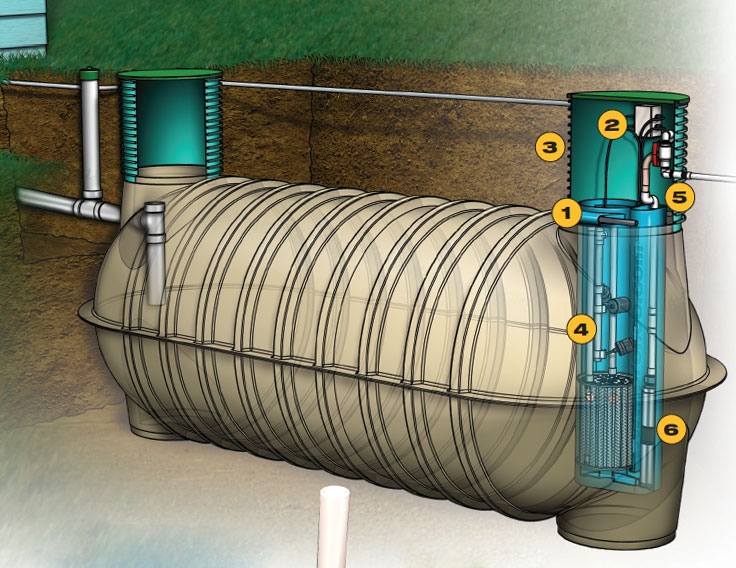Call This Sunday to Get $25 OFF
Clean Solutions, Dirty Jobs – Done Right. Reliable. Responsive. Remarkable.
Call This Sunday to Get $25 OFF
Clean Solutions, Dirty Jobs – Done Right. Reliable. Responsive. Remarkable.
Septic lift stations are integral components of wastewater management systems, playing a pivotal role in areas where the natural terrain challenges the smooth flow of sewage through traditional gravity-based systems. We provide comprehensive septic tank installation services at Septic Connection, safeguarding public health and preventing detrimental environmental contamination. Let’s delve into septic lift stations, exploring their functions, importance, and critical role in ensuring your home’s wastewater is efficiently handled, even in the most challenging landscapes.

A septic lift station is a complex system designed to transport wastewater efficiently from lower elevation points to higher ones, where gravity-based flow is not practical because of challenging terrain or other factors. Examining their key components to understand the inner workings before scheduling a septic tank installation is essential. Here are the vital components of a septic lift station.
The collection tank serves as the initial receptacle for incoming wastewater. It is strategically placed at a low point in the sewage system, where gravity naturally directs wastewater. As sewage enters the tank, solid particles settle to the bottom while lighter materials float to the surface. This separation process helps prevent clogs and damage, hence the need to schedule routine inspections with a trusted septic company.
The pump chamber is one of the most critical elements of a septic lift station. This chamber houses the electric pumps for lifting wastewater from the collection tank to higher elevations, such as a municipal sewage treatment facility or another point in the sewage network. These pumps are specifically for durability and efficiency, with the capacity to handle various types of wastewater, including liquid and solid waste.
The septic system is an onsite waste treatment facility, and it is incredibly reliable. However, the system is only as effective…
Imagine flushing your toilet and then suddenly realizing that your backyard has turned into a swampy mess. This unpleasant experience is…
Soil testing is a critical step in various construction and environmental projects. It provides essential information about the ground conditions, which…
Grease traps are remarkable tools that help keep your establishment clean and free from bad odors. Septic Connection has a…
If you have just moved into a new home or property that relies on a septic system for waste and wastewater…
Inside the pump chamber, the pumps are typically equipped with level sensors that monitor the liquid level in the collection tank. When the liquid reaches a predetermined level, the pumps are activated automatically. They pump the wastewater out of the collection tank, overcoming the force of gravity and sending it through a discharge pipe to the desired destination. This process ensures a consistent and reliable wastewater flow, but regular care is vital to prevent septic tank repair emergencies.
Float switches are integral to the automatic operation of septic lift stations. These devices are installed inside the collection tank and are connected to the pump control system. Float switches have buoyant floats that rise and fall with the liquid level in the tank. When the liquid level reaches a certain point, the float switch triggers the pump to start or stop, minimizing the need for frequent septic tank pumping. This automation ensures the lift station operates seamlessly, preventing overflows or equipment damage.
Understanding the intricate operation of septic lift stations is essential for appreciating their vital role in wastewater management. These stations tackle the challenges posed by rugged terrain, ensuring the responsible transport of wastewater. Septic lift stations safeguard public health and prevent environmental contamination by efficiently lifting sewage against gravity and automating their processes.
Recognizing the significance of these components is critical to ensure high performance and prevent septic tank repair or replacement emergencies. Contact us at Septic Connection and schedule a consultation with our experts. As a trusted septic company, we provide various services at competitive rates, including septic tank pumping.
Your septic system works hard every single day, quietly managing all the wastewater from your home. Because it’s hidden underground, many homeowners forget it even exists—until something goes wrong. But…
Read moreHomeowners are always looking for ways to keep their septic systems healthy, efficient, and problem-free. With so many products on the market promising to boost bacteria, break down solids, or…
Read more